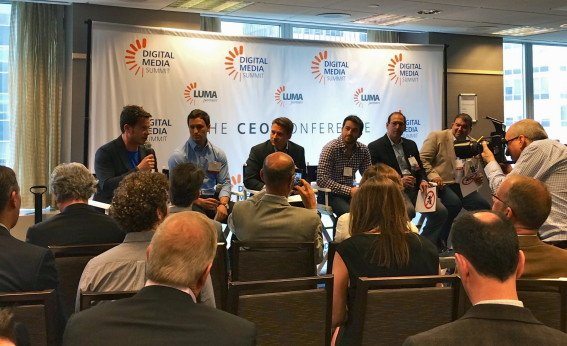Events
LUMA Partners’ Digital Media Summit: What You Need to Know on The Marketing Cloud and Omnichannel
June 9, 2014

This post originally appeared on LinkedIn.
—
I recently participated in a panel discussion at LUMA Partners’ 6th Annual Digital Media Summit as a part of Internet Week 2014. The topic: Omnichannel Marketing – The Marketing Clouds. The audience: C-suite executives focused on the future of marketing technology and what they need to know.
Panelists included my contemporaries from AgilOne, Integrate, Demandbase, and [x+1] each of whom brought a unique perspective. I left with multiple takeaways – some we were unanimously aligned on; others our thought processes were not fully aligned. My perspective on each takeaway is below as well as thoughts on how they should impact your decisioning regarding omnichannel and marketing cloud investments.
Agree: Omnichannel lacks a consistent definition
Our moderator, Matt Keiser of LiveIntent, defined omnichannel as, “the coordinated messaging across all paid, earned and owned media.” At Marigold Engage by Sailthru, we define omnichannel as the ability to engage with individual users across all channels in contiguous experiences. In our opinion, “coordinating” a message speaks to only half of the dynamic – the push – not the complete dynamic, which is both a push and pull with your audience.
Most marketing technology providers have their own spin on omnichannel with nuances to the definition, which underscores the fact that until providers speak a consistent language, marketers and brands will continue to have a difficult time comparing apples-to-apples. True omnichannel is a contiguous experience that evolves over time; coordinating messages isn’t enough, the messages must be personalized for omnichannel to be effectively employed.
Agree: Proactive collaboration drives success in omnichannel
In many organizations, marketing and technology are isolated, working with each other when needed; it’s a reactive approach. Being successful in omnichannel marketing requires proactive collaboration between these two teams. The first step is in knowing your own technology and organization blueprint. Without an understanding of what sits where, who manages each component and how data is joined you’ll be reacting when it’s already too late.
Marigold Engage by Sailthru, purpose-built as a single solution for omnichannel, and we deliver a product that is holistic. This is where the “big box” marketing clouds can’t compete as they’ve all grown through acquisition. What they actually provide is a massive system for data joining, which is hard and expensive to manage.
Disagree: On the primary objective of omnichannel being to sell
The need for omnichannel is born from the consumer demand for more relevant, efficient relationships with brands. Their preferences and desires are central to the equation and without focusing on these as the core purpose of omnichannel, brands risk increasing consumer dissatisfaction and the erosion of trust.
Yes, omnichannel must demonstrate value through revenue generation as increases in brand affinity must be met with increases in sales. At Sailthru our point of view is unique in that if you work to understand your customers, you’ll then know how to best communicate with them, build trust, and increase customer lifetime value and revenue. We’re customer-obsessed, and it’s an important distinction about our process as omnichannel will not deliver value to brands if consumer needs, wants and demands aren’t the focus.
I’d love to hear your thoughts on the points above. Let us know how you define omnichannel, what you feel the roadblocks are, and whether or not omnichannel is best when customer-centric or sales-oriented.
— Neil Capel, CEO and Founder, Sailthru
The State of Brand Loyalty in the U.S. in 2023
Related



